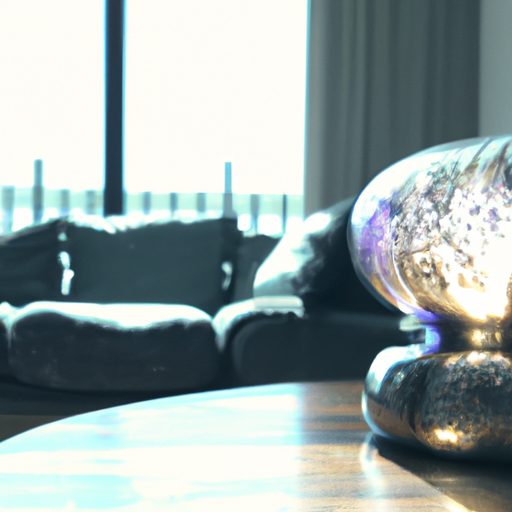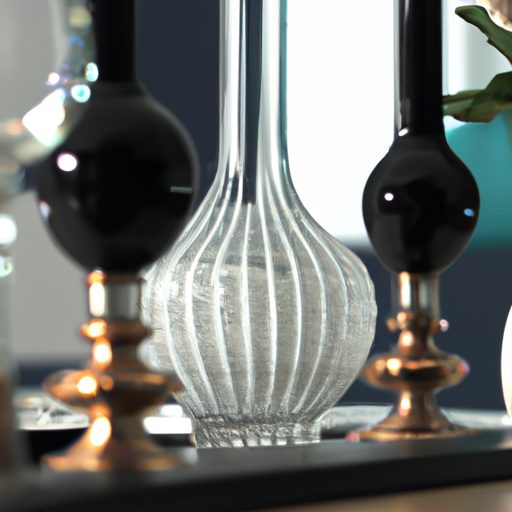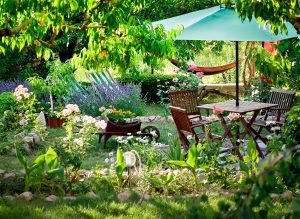“Bringing Style and Comfort to Your Home – The Latest Trends in Home Decor and Design!”
Introduction
The home decor and design industry is constantly evolving, with new trends emerging every year. From bold colors and patterns to minimalist designs, there is something for everyone. Whether you’re looking to update your home with a few small changes or completely overhaul your interior design, there are plenty of options to choose from. In this article, we’ll explore some of the latest trends in home decor and design, so you can find the perfect look for your home.
How to Incorporate the Latest Trends in Home Decor and Design
The home decor and design industry is constantly evolving, with new trends emerging every year. Incorporating the latest trends into your home can be a great way to give it a fresh, modern look. Here are some tips for incorporating the latest trends in home decor and design.
First, consider the overall style of your home. If you have a traditional home, you may want to incorporate more classic elements into your decor. On the other hand, if you have a modern home, you may want to focus on incorporating more contemporary elements. This will help ensure that the new trends you incorporate fit in with the overall style of your home.
Second, consider the colors and materials you use. Color is a great way to add a modern touch to your home. Look for colors that are trending, such as pastels, jewel tones, and muted shades. When it comes to materials, look for natural elements such as wood, stone, and metal. These materials can add texture and interest to your home.
Third, consider the furniture and accessories you use. Look for furniture pieces that are modern and stylish. You can also add modern touches with accessories such as throw pillows, rugs, and artwork.
Finally, don’t forget to add some personal touches. Incorporating your own style and personality into your home decor is a great way to make it unique and special.
By following these tips, you can easily incorporate the latest trends in home decor and design into your home. With a few simple changes, you can give your home a modern, stylish look that is sure to impress.
The Benefits of Incorporating Sustainable Design Elements into Home Decor
Incorporating sustainable design elements into home decor is an increasingly popular trend that offers numerous benefits. Sustainable design is a type of design that focuses on creating products and spaces that are environmentally friendly and resource efficient. Sustainable design elements can be incorporated into home decor in a variety of ways, such as using recycled materials, energy-efficient lighting, and natural materials.
The primary benefit of incorporating sustainable design elements into home decor is that it helps to reduce the environmental impact of the home. Sustainable design elements can help to reduce energy consumption, conserve water, and reduce waste. For example, using energy-efficient lighting can help to reduce electricity consumption, while using natural materials such as bamboo or cork can help to reduce the amount of waste produced. Additionally, using recycled materials can help to reduce the amount of resources needed to create new products.
Incorporating sustainable design elements into home decor can also help to save money. Sustainable design elements can help to reduce energy and water bills, as well as the cost of purchasing new products. Additionally, using recycled materials can help to reduce the cost of purchasing new products, as these materials are often cheaper than buying new materials.
Incorporating sustainable design elements into home decor can also help to create a healthier living environment. Sustainable design elements can help to reduce the amount of toxins and pollutants in the home, as well as improve air quality. Additionally, using natural materials can help to reduce the amount of allergens in the home, as these materials are often hypoallergenic.
Finally, incorporating sustainable design elements into home decor can help to create a more aesthetically pleasing environment. Sustainable design elements can help to create a unique and stylish look that is both modern and eco-friendly. Additionally, using natural materials can help to create a calming and relaxing atmosphere.
Incorporating sustainable design elements into home decor offers numerous benefits, including reducing the environmental impact of the home, saving money, creating a healthier living environment, and creating a more aesthetically pleasing environment. Sustainable design elements can be incorporated into home decor in a variety of ways, such as using recycled materials, energy-efficient lighting, and natural materials.
How to Use Color Psychology to Create a Stylish Home
Color psychology is the study of how colors affect our emotions and behavior. It is a powerful tool that can be used to create a stylish home that reflects your personality and lifestyle. By understanding the psychological effects of color, you can create a space that is both aesthetically pleasing and emotionally satisfying.
When selecting colors for your home, consider the mood you want to create. For example, warm colors such as red, orange, and yellow can create a feeling of energy and excitement. Cool colors such as blue, green, and purple can create a feeling of calm and relaxation. Neutral colors such as white, gray, and beige can create a feeling of balance and harmony.
When choosing colors for your home, consider the size of the room. Darker colors can make a room feel smaller, while lighter colors can make a room feel larger. If you have a small room, consider using lighter colors to make it appear larger. If you have a large room, consider using darker colors to create a cozy atmosphere.
When selecting colors for your home, consider the purpose of the room. For example, a bedroom should be a calming and relaxing space, so consider using cool colors such as blue and green. A living room should be a place for entertaining, so consider using warm colors such as red and orange.
When selecting colors for your home, consider the lighting in the room. Natural light can make colors appear brighter and more vibrant, while artificial light can make colors appear duller and less vibrant. Consider the type of lighting in the room when selecting colors.
Finally, consider the furniture and accessories in the room when selecting colors. If you have a lot of dark furniture, consider using lighter colors to create contrast. If you have a lot of light furniture, consider using darker colors to create balance.
By understanding the psychological effects of color, you can create a stylish home that reflects your personality and lifestyle. Consider the mood, size, purpose, lighting, and furniture when selecting colors for your home to create a space that is both aesthetically pleasing and emotionally satisfying.
The Pros and Cons of Minimalist Home Decor

Minimalist home decor is a popular trend that has been gaining traction in recent years. It is characterized by a focus on simplicity, clean lines, and a lack of clutter. While minimalist home decor can create a calming and inviting atmosphere, it is not without its drawbacks. This article will explore the pros and cons of minimalist home decor.
Pros
The primary benefit of minimalist home decor is that it creates a sense of calm and order. By removing clutter and focusing on simple, clean lines, minimalist decor can help to reduce stress and create a more peaceful atmosphere. Additionally, minimalist decor is often easier to maintain than more traditional styles. With fewer items to clean and organize, minimalist decor can help to reduce the amount of time spent on housekeeping.
Another advantage of minimalist home decor is that it can be more cost-effective than other styles. By focusing on fewer items, you can save money on furniture and accessories. Additionally, minimalist decor can help to make a small space appear larger. By removing clutter and focusing on clean lines, a small room can appear more spacious.
Cons
One of the primary drawbacks of minimalist home decor is that it can be difficult to achieve. Creating a minimalist look requires a great deal of discipline and restraint. Additionally, minimalist decor can be difficult to personalize. Without the addition of personal items, such as photographs or artwork, a minimalist space can feel cold and impersonal.
Another potential downside of minimalist home decor is that it can be difficult to find furniture and accessories that fit the style. Minimalist decor often requires more modern pieces, which can be more expensive than traditional items. Additionally, minimalist decor can be difficult to update. Without the addition of new items, a minimalist space can quickly become outdated.
In conclusion, minimalist home decor can create a calming and inviting atmosphere. However, it is not without its drawbacks. Before committing to a minimalist style, it is important to consider the pros and cons carefully.
How to Incorporate Smart Home Technology into Your Home Design
Smart home technology is becoming increasingly popular in home design, allowing homeowners to control their home’s lighting, temperature, security, and more from the convenience of their smartphone or tablet. Incorporating this technology into your home design can provide a range of benefits, from increased convenience to improved energy efficiency. Here are some tips for incorporating smart home technology into your home design.
First, consider the types of smart home technology you would like to incorporate. Popular options include lighting control systems, thermostats, security systems, and home entertainment systems. Think about how you would like to use each of these systems and what features you would like them to have.
Next, decide where you would like to install the technology. For example, if you are installing a lighting control system, you will need to decide where to place the switches and dimmers. If you are installing a thermostat, you will need to decide where to place the device.
Once you have decided on the type and location of the technology, you will need to consider how to incorporate it into your home design. For example, if you are installing a lighting control system, you may want to consider installing dimmers that match the style of your home’s existing light fixtures. If you are installing a thermostat, you may want to consider installing a device that is designed to blend in with your home’s existing decor.
Finally, you will need to consider how to integrate the technology into your home’s existing systems. For example, if you are installing a lighting control system, you will need to make sure that it is compatible with your home’s existing wiring. If you are installing a thermostat, you will need to make sure that it is compatible with your home’s existing heating and cooling system.
By following these tips, you can easily incorporate smart home technology into your home design. This technology can provide a range of benefits, from increased convenience to improved energy efficiency. With the right planning and installation, you can enjoy the benefits of smart home technology for years to come.
The Benefits of Incorporating Natural Materials into Home Decor
Incorporating natural materials into home decor is a great way to bring a sense of warmth and comfort to any living space. Natural materials such as wood, stone, and plants can add texture, color, and a unique aesthetic to any room. Not only do these materials look beautiful, but they also offer a variety of benefits that can improve the overall atmosphere of a home.
One of the main benefits of using natural materials in home decor is that they are environmentally friendly. Natural materials are renewable and biodegradable, meaning they can be recycled or reused in other ways. This helps to reduce the amount of waste that is produced and can help to reduce the environmental impact of home decor. Additionally, natural materials are often sourced from sustainable sources, which helps to ensure that the environment is not harmed in the process of obtaining them.
Natural materials also provide a sense of comfort and warmth to any living space. Wood, stone, and plants can all help to create a cozy atmosphere that is inviting and relaxing. Natural materials can also help to reduce stress levels, as they can provide a calming effect that can help to reduce anxiety and improve overall wellbeing.
In addition to providing a sense of comfort and warmth, natural materials can also help to improve air quality. Natural materials such as wood and stone can help to absorb pollutants and other airborne particles, which can help to improve the air quality in a home. This can be especially beneficial for those who suffer from allergies or asthma, as it can help to reduce the amount of allergens and other irritants in the air.
Finally, incorporating natural materials into home decor can also help to create a unique aesthetic. Natural materials can be used to create a rustic, earthy look that is both stylish and timeless. This can help to create a unique and inviting atmosphere that is sure to impress guests and family members alike.
Incorporating natural materials into home decor is a great way to bring a sense of warmth and comfort to any living space. Not only do these materials look beautiful, but they also offer a variety of benefits that can improve the overall atmosphere of a home. From reducing stress levels to improving air quality, natural materials can be a great addition to any home.
How to Incorporate Vintage and Retro Elements into Home Decor
Vintage and retro elements can be a great way to add a unique and timeless touch to any home decor. Incorporating these elements into your home decor can be a fun and creative way to express your personal style. Here are some tips for incorporating vintage and retro elements into your home decor.
1. Start with a focal point. Choose a piece of furniture or artwork that will be the focal point of the room. This could be a vintage armchair, a retro-style sofa, or a vintage painting. This will be the starting point for the rest of your decor.
2. Incorporate vintage accessories. Add vintage accessories such as lamps, rugs, and wall art to give the room a unique and timeless look. Look for items that have a classic style, such as vintage glassware or antique clocks.
3. Use vintage fabrics. Incorporate vintage fabrics such as velvet, silk, and linen into your decor. These fabrics can be used to upholster furniture, make curtains, or create throw pillows.
4. Add vintage lighting. Vintage lighting can add a unique touch to any room. Look for vintage chandeliers, sconces, and table lamps to give the room a classic feel.
5. Incorporate vintage colors. Use colors from the past to give the room a retro feel. Look for colors such as mustard yellow, avocado green, and burnt orange to give the room a vintage vibe.
By following these tips, you can easily incorporate vintage and retro elements into your home decor. With a little creativity and some vintage pieces, you can create a timeless and unique look that will be sure to impress.
Conclusion
The latest trends in home decor and design are constantly evolving, and it can be difficult to keep up with them. However, by staying informed and taking advantage of the latest trends, you can create a beautiful and unique home that reflects your personal style. Whether you prefer a modern, minimalist look or a more traditional, classic style, there are plenty of options available to help you create the perfect home.


